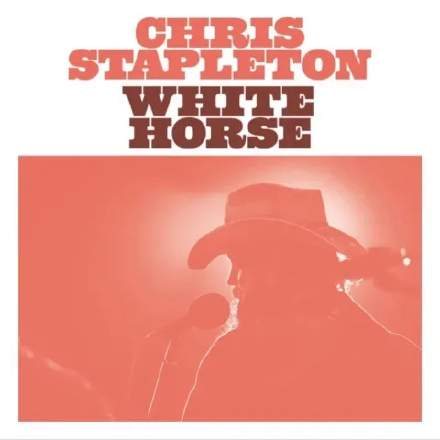
It’s pretty common to hear artists adding an extra bar to a four-bar or eight-bar phrase for dramatic effect – as Ingrid Andress does before the second verse of 'More Hearts Than Mine', for instance. By contrast, it’s less often you hear four-square phrase-lengths getting shortened, as Olivia Rodrigo does, for example, at the end of each verse of 'Driver's License'. Even less common, though is when just a beat is taken away, and it’s a credit to Chris Stapleton how he’s made such a virtue of it here.
The dropped beat in question appears (or should that be ‘disappears’?) at the end of the chorus section (eg. 1:16-1:28) before it transitions into the chorus coda (eg. 1:28-1:35), and it puts a fabulous stress on the word ‘yet’ by breaking out of the double-accent pattern established by the tail of all three previous lines ("…white horse", “…sunset”, “…wait for”). By doing this, he clearly frames that phrase as the crux of the lyrical message, which I agree it should be – the whole song is basically him saying he’s not ready to be what his girl wants, but also suggesting that he might grow to be if she’s willing to wait. And the repetition of ‘I ain’t there yet’ in the chorus coda only underlines this hook’s importance.
On a technical level, though, a couple of things did niggle me about this production. Firstly, the lead vocal has a really piercing resonance to it around 3.9kHz, and it makes the mix sonics feel uncomfortably fatiguing well before I’ve turned up the listening volume to any kind of respectable rocking-out level. It’s probably most obvious here during the first verse play_arrow | get_app and I really wish they’d controlled that frequency peak with a band of dynamic EQ to make it more comfortable when listening loud – like this, for instance: play_arrow | get_app The vocal is making the mix sound edgy later in the song too, despite the smoothness and warmth of the band sound in general (as showcased during the powerful instrumental sections at 2:50 and 3:49). When I experimented with removing the peak there, though, it left the vocal feeling a bit dull-sounding on account of frequency masking from the electric guitars and cymbals. That’s one of the problems with HF vocal resonances – they can give the singer an illusion of overall brightness and cut-through without there being much broader-band upper-spectrum harmonic density. So you’re caught between a mix that sounds abrasive if you leave the frequency peak in, or a lead vocal that sounds muffled if you try to tame it.
My second quibble is even more pernickety. Can you hear how there’s something like a bit of stray shaker bubbling up underneath the first couple of vocal lines at 0:49-0:57? I’m pretty sure that’s a bit of pick noise from Stapleton’s guitar bleeding through the vocal mic. Now, I don’t have anything in principle against a bit of live-session verité like that being audible. What bugs me is that it drops out totally at 0:58. If you want to say ‘‘here’s a true performance, warts and all", then why draw attention to the fact that the vocal’s been gated/edited? Alternatively, if the pick noise annoys you enough to remove it at 0:58, why not do the job properly with restoration software so that it doesn’t sound like its been edited? At the moment, it’s neither one thing nor the other, which somehow feels like it subtly undermines Stapleton’s hard-earned ’the real deal’ brand.










